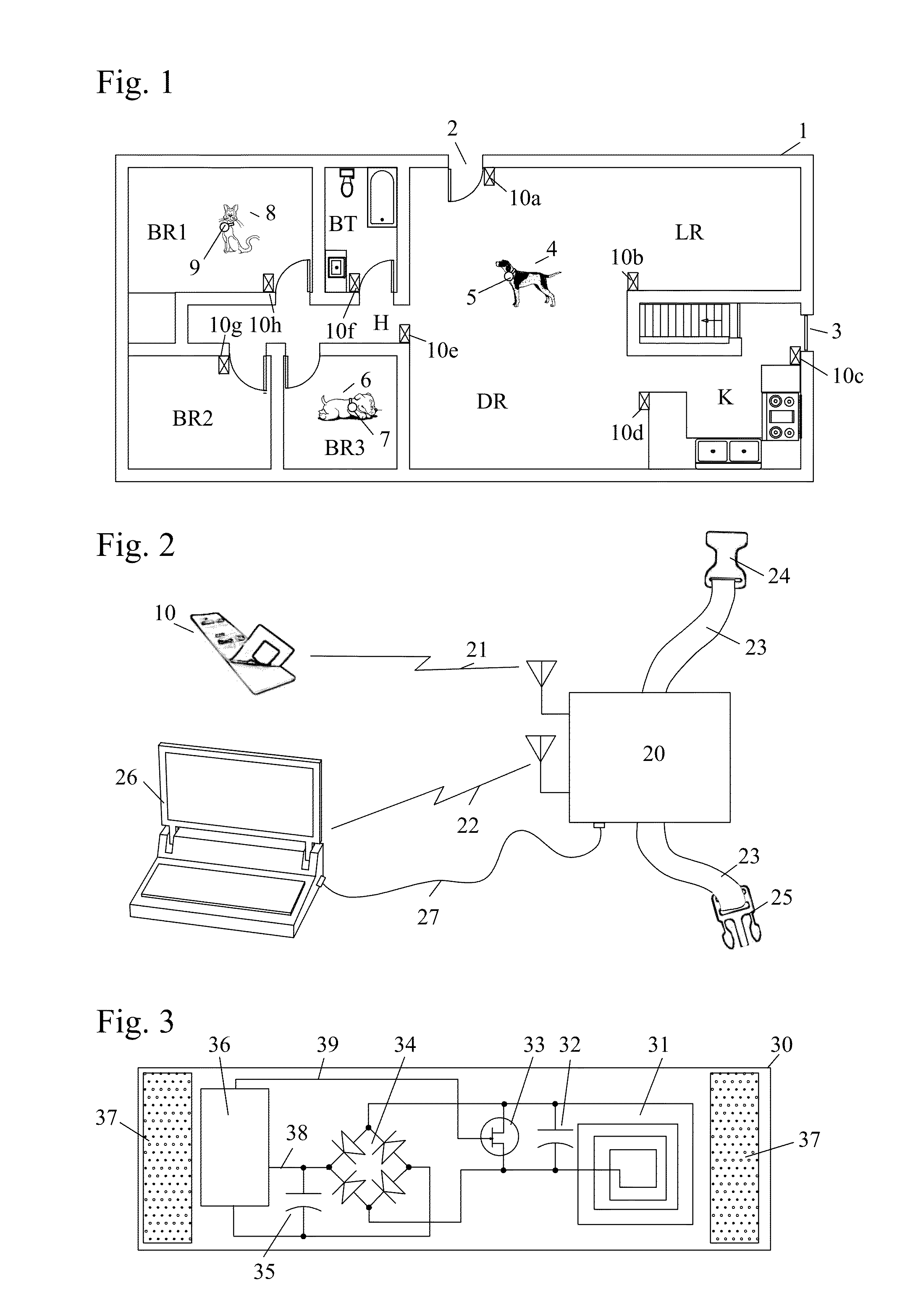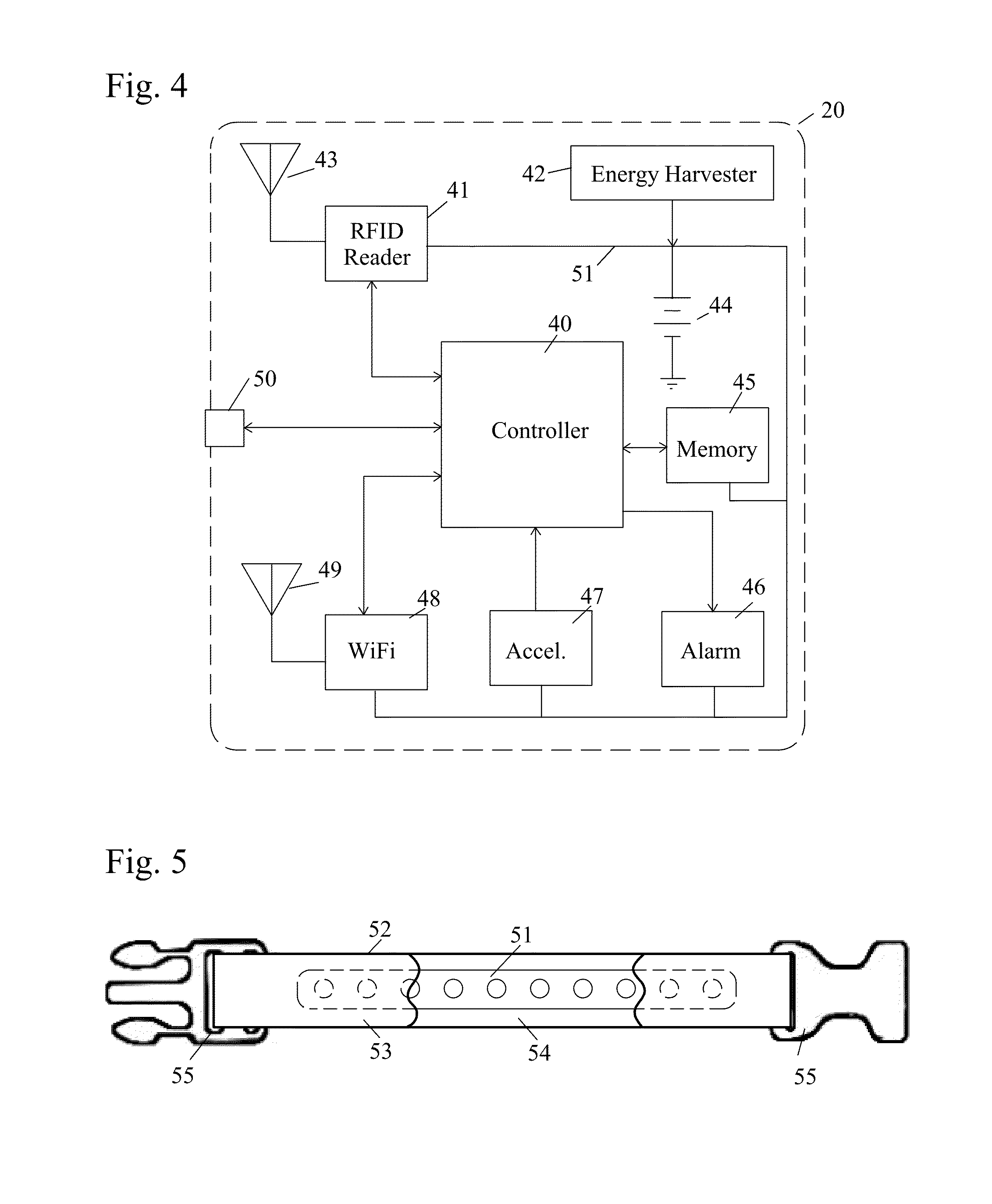Wireless Pet Barrier using RFID
a wireless, pet-friendly technology, applied in the field of animal training, can solve the problems of pet not being fully trained, a large area may be a danger to the pet, and soiling an expensive rug or a couch
- Summary
- Abstract
- Description
- Claims
- Application Information
AI Technical Summary
Benefits of technology
Problems solved by technology
Method used
Image
Examples
Embodiment Construction
[0019]FIG. 1 shows how a Pet Barrier system would be deployed in a representative house 1. While the system is described herein as it would be used in a house, it will be understood that the system can be used both indoors or outdoors. The house has three bedrooms BR1-BR3 along a hall H, a bathroom BT, dining room DR, kitchen K and living room LR. There is a front door 2 opening into the living room LR and a back door 3 leading into the kitchen K. The family in this example has three pets: an adult dog 4, a puppy 6, and a cat 8.
[0020]FIG. 3 shows an example of a block or schematic diagram of an RFID tag which could be used with the system. It will be understood that the specific design shown is for example purposes only, to explain how passive RFID tags work, and other designs are usable within the teachings of the invention. Passive RFID tags are commercially available from numerous sources, for example, Alien Technologies in Morgan Hills, Calif., or Avery-Dennison in Flowery Branc...
PUM
 Login to View More
Login to View More Abstract
Description
Claims
Application Information
 Login to View More
Login to View More - R&D
- Intellectual Property
- Life Sciences
- Materials
- Tech Scout
- Unparalleled Data Quality
- Higher Quality Content
- 60% Fewer Hallucinations
Browse by: Latest US Patents, China's latest patents, Technical Efficacy Thesaurus, Application Domain, Technology Topic, Popular Technical Reports.
© 2025 PatSnap. All rights reserved.Legal|Privacy policy|Modern Slavery Act Transparency Statement|Sitemap|About US| Contact US: help@patsnap.com



